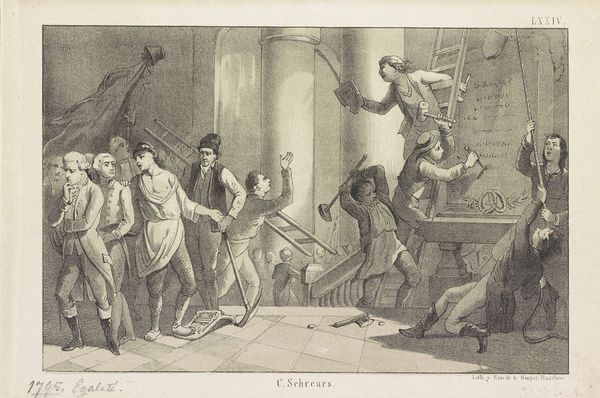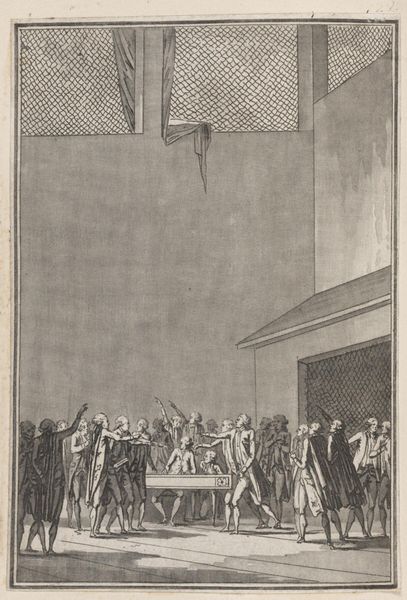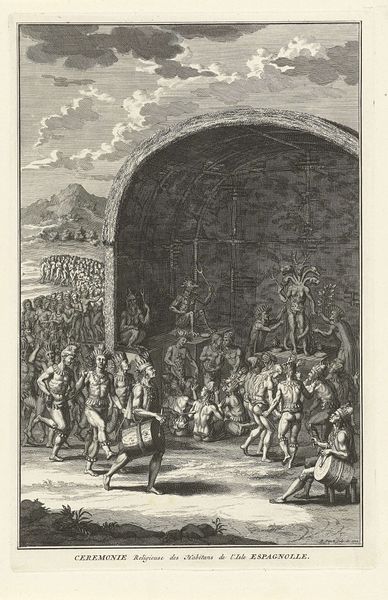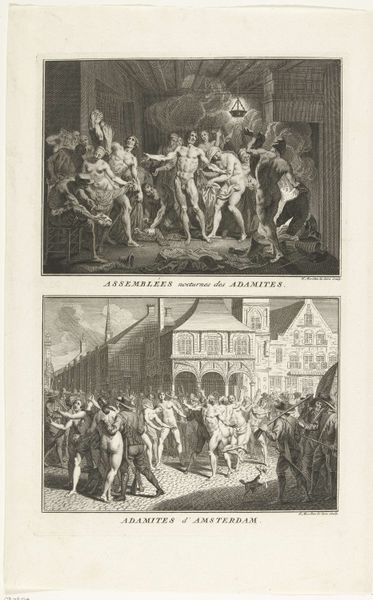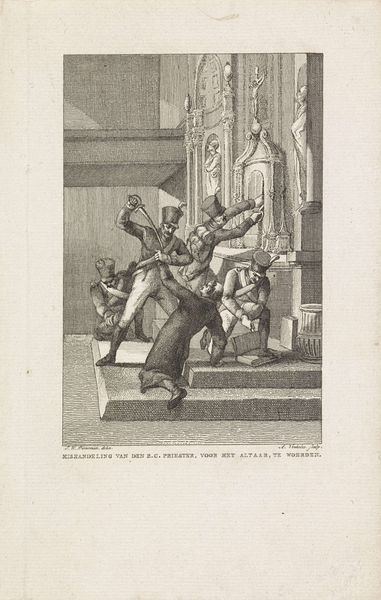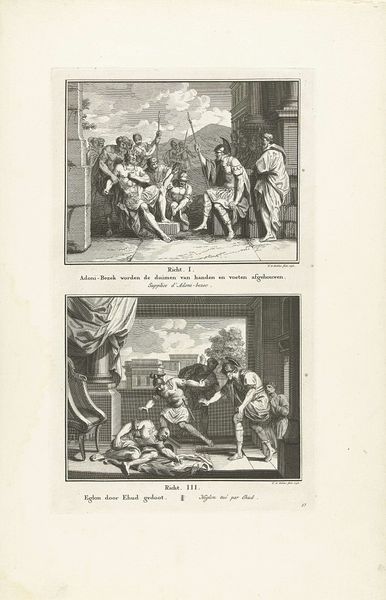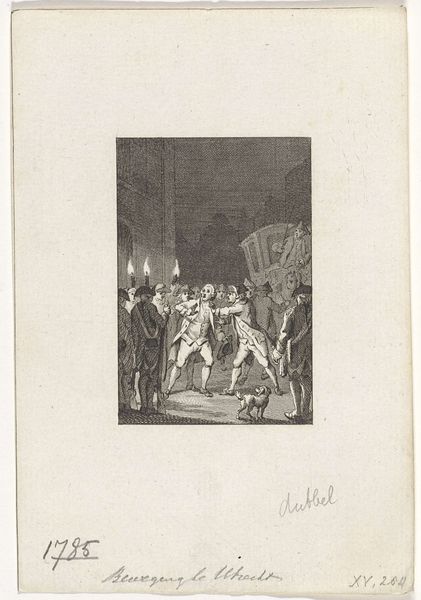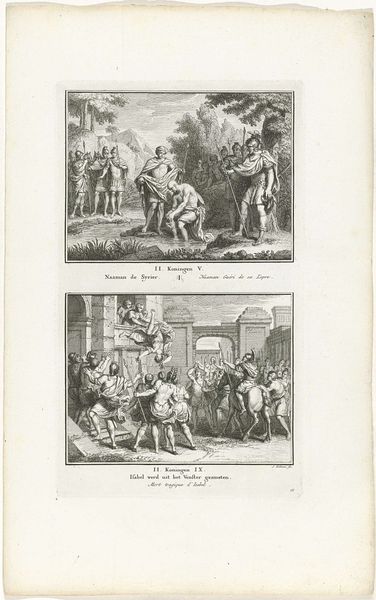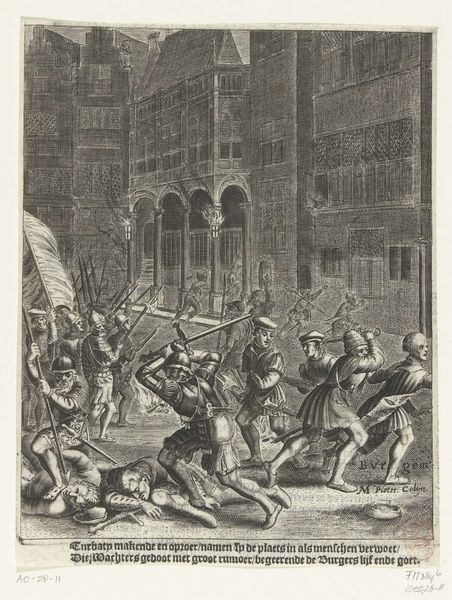
print, engraving
#
african-art
#
narrative-art
# print
#
old engraving style
#
pen-ink sketch
#
genre-painting
#
history-painting
#
engraving
Dimensions: height 337 mm, width 221 mm
Copyright: Rijks Museum: Open Domain
Editor: This is "Ceremonie bij de oorsponkelijke bevolking van de Caraïben" or Ceremony of the Indigenous People of the Caribbean by Bernard Picart from 1721. It's an engraving, quite detailed. I’m immediately struck by the central figure, seemingly adorned with ceremonial garb and a crown of feathers. What kind of narrative or deeper meaning do you think is being conveyed through these visual elements? Curator: This image, steeped in the visual language of its time, serves as a potent cultural artifact. Look closely. The central figure you noticed—the 'priest' as the inscription suggests— wields symbols. His attire speaks not just to status but perhaps to a conduit role, connecting earthly and spiritual realms. But, I wonder, what do the other figures convey? Their poses, some burdened, others expectant—how might those symbols speak to the collective identity and the purpose of this gathering? Editor: They almost seem to be in motion around this central figure, perhaps they're dancing or in some form of ritualistic activity. Is the location within the building relevant? Curator: Absolutely! Consider the backdrop - that architecture, framing a view into the open landscape. This juxtaposition places the ceremony at a crossroads: between the controlled, constructed world and untamed nature. The building almost feels like a threshold. What then might be the significance of the activities happening within this defined space, but with clear view toward the landscape beyond? Editor: It's as if they're mediating between these two worlds...between their community and the natural world around them, and seeking to harness power or courage. Curator: Precisely! Now, consider the European gaze through which Picart, as a European artist, interpreted this Caribbean ceremony. Are there potential distortions in how he represented these symbols and actions, knowing that it isn't coming from an Indigenous perspective? Editor: That's a really interesting point; his view must affect the accuracy of the symbolic translation. Curator: Indeed, by looking critically at these representations we start to see how much cultural interpretation affects historical record. The symbols speak, but they speak with a European accent, inviting us to unravel those complexities. Editor: This has totally changed how I see the piece; it makes you wonder about all the layers of representation and cultural memory at play. Curator: Exactly. Now you’re really interpreting the symbolism.
Comments
No comments
Be the first to comment and join the conversation on the ultimate creative platform.
